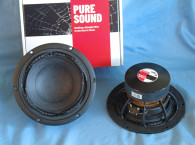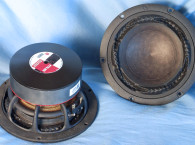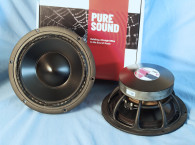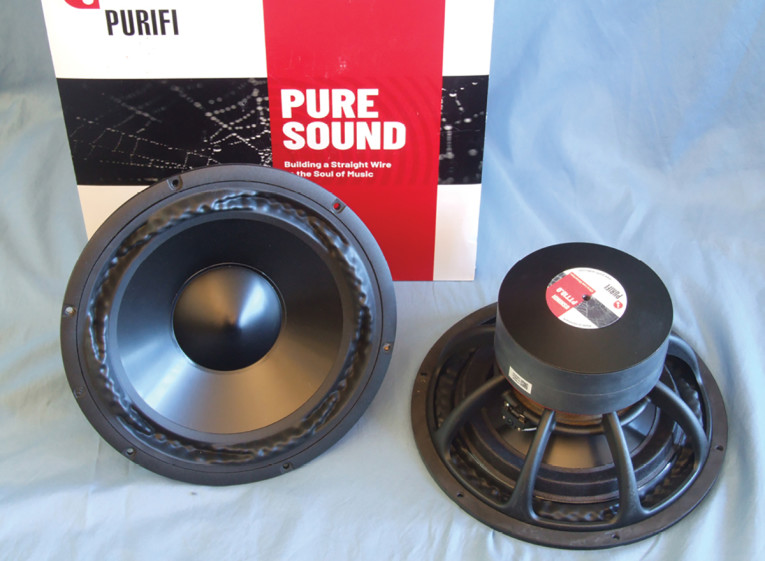
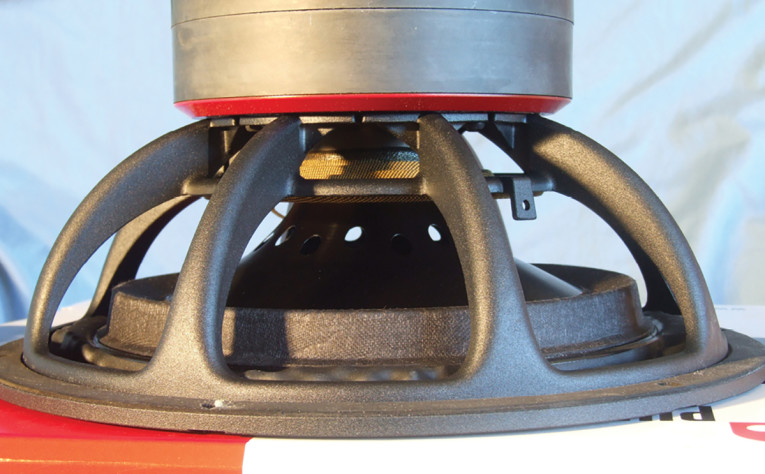
Compliance is provided by an NBR surround, which like the smaller diameter Purifi Audio woofers and midrange surrounds, is a completely new and unique concept in surround design. Looking at Photo 1, this is obviously like no other surround anyone has produced until the Purifi design. Surrounds, besides providing compliance and centering, are not only a source of noise and distortion, but also a tool for damping the outside rim of a cone.
It is not a surprise that surrounds have been the subject of numerous patents and academic papers that offer solutions based on shape, material and complex material thickness variations. However, I have yet to see anything as articulated as the Purifi surround technology.
The PTT10.0X04-NAB-01, like the all the drivers in the Purifi line-up, has a surround configuration that is a combination of alternating sections of both reverse roll and positive roll, plus some interesting undulations within the alternating sections. Note that the positive roll has an obvious left/right asymmetry, which yields a positive/negative going articulation on either end of the reverse roll sections. All this complexity serves to provide a more constant Sd as the driver moves from its far outer to far inner positions, as well as a more linear compliance. Remaining compliance is provided by a 4.5” diameter symmetrical roll flat spider. (Note that the individual rolls themselves are asymmetrically shaped, with a convex slope on one side and a concave slope on the other.)
The motor consists of a stacked pair of FEA-optimized 138mm x 25mm ferrite ring magnets with milled and tapered plates, the back plate having a black emissive coating (the front plate is bright red), plus a pole piece comprised of a neo pole magnet sandwiched between steel sections that serves to linearize the Bl.
Driving the cone assembly is a 52mm (2”) diameter substantial four-layer voice coil wound with round aluminum wire on a non-conducting fiberglass former. Like the surround, this four-layer coil also exhibits some very unique engineering. Unlike a winding that has the same width across its full length, this four-layer coil has alternating two- and four-layer sections on the length of the coil with varying widths of two- and four-layer sections.
As already mentioned, most of the pole piece has been replaced by a strong neodymium magnet that significantly reduces the coil inductance as well as the inductance vs. position gradient all the way to DC (according to Purifi Audio, this cannot be achieved using shorting rings since they only work above a certain frequency determined by the rings cross-sectional area).
An iron pole piece extension is optimized to flatten the inductance vs. position further. This virtually eliminates the current dependency of the Bl factor as well as the position dependency of the coil impedance — two major nonlinear sources of intermodulation distortion (IMD) — changing the Bl or coil impedance modulates the sensitivity of the speaker leading to amplitude modulation.
Two very thick copper shorting rings surround the coil within its full linear stroke. The purpose of these rings is to further lower the inductance and shield the iron from the AC field of the coil. Having an AC field in the iron is a major source of distortion (hysteresis and BH saturation). Note that the top ring extends through the gap since the AC field induced in the iron concentrates at surfaces close to the coil and thus needs the most shielding. The pole ventilation is through holes in the cone assembly to get enough venting area to eliminate air rushing noises.
This driver is so new, the IEC268 long-term power handling has not yet been published. However, given the similarity to the PTT8.0X’s motor structure rated 350W IEC268 long-term power handling rating, the PTT10.0X04-NAB-01 power handling will likely be greater than this. Last, the PTT10.0X04-NAB-01 has a 14.75mm Xmax (5mm gap height and 40.5mm winding length), and voice coil tinsel braid lead wires that are terminated to gold-plated solderable terminals located on one side of the frame.
I began the testing using the LinearX LMS analyzer and the Physical LAB IMP Box (the same type fixture as a LinearX VI Box) to create both voltage and admittance (current) curves with the driver clamped to a rigid test fixture in free-air at 0.3V, 1V, 3V, 6V, 10V, 15V, and 20V with oscillator on-time between sweeps to simulate the actual thermal process over time. The 20V curves were sufficiently linear to get an adequate curve fit and used for the LEAP 5.0 TSL/LTD model TSP calculation.
Following my established protocol, I no longer use a single added mass measurement and instead use the company’s supplied Mmd data (94.1 grams for the PTT10.0X04-NAB-01). The collected data, in this case the 14 550-point (0.3V to 20V) sine wave sweeps for each Purifi Audio sample were post-processed and the voltage curves divided by the current curves to generate impedance curves. I imported the data along with the phase, derived using the LMS calculation method, and the accompanying voltage curves to the LEAP 5 Enclosure Shop software. Figure 1 shows the 1V free-air impedance curve. Table 1 compares the LEAP 5 LTD/TSL TSP data and factory parameters for both Purifi PTT10.0X04-NAB-01 samples.
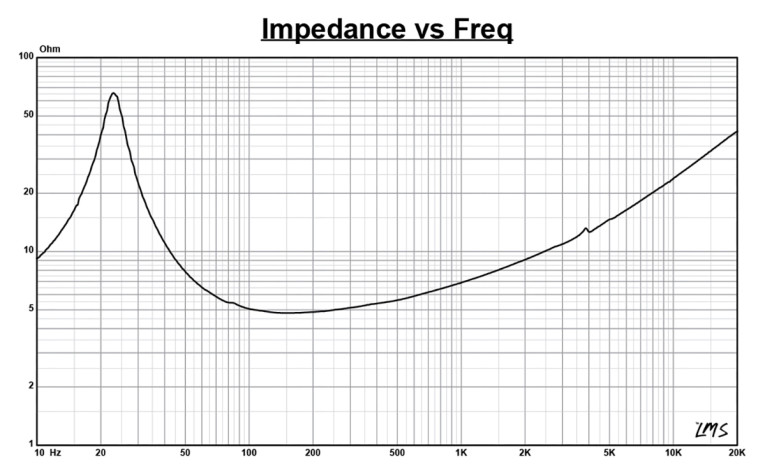
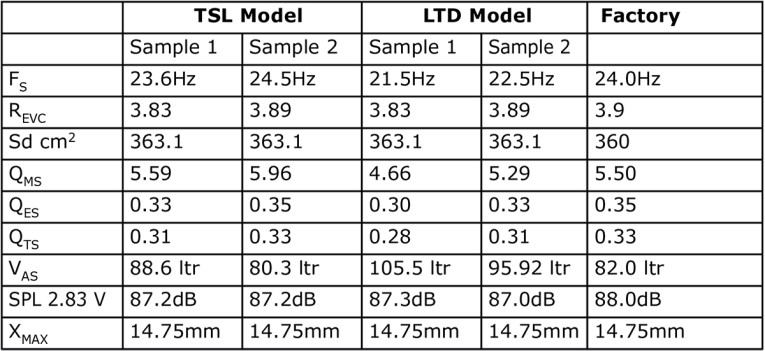
Figure 2 displays the box simulation results for the PTT10.0X04-NAB-01 woofer in the sealed and vented enclosures at 2.83V and at a voltage level that achieves excursion equal to Xmax+15% (17mm for the PTT10.0X04-NAB-01). This resulted in an F3 of 48.5Hz (-6dB=38Hz) with a Qtc=0.62 for the closed box and a -3dB for the vented simulation of 29.4 Hz (-6dB= 25.6 Hz). Increasing the voltage input to the simulations until the Xmax +15% excursion was reached resulted in 114dB at 69V for the sealed enclosure simulation and 115dB with the same 69V input level ported box. Figure 3 shows the 2.83V group delay curves and Figure 4 shows the 69V excursion curves. Using a third- or fourth-order active high-pass filter in the vicinity of 20Hz would result in lower excursion and higher output capability for the vented incarnation.
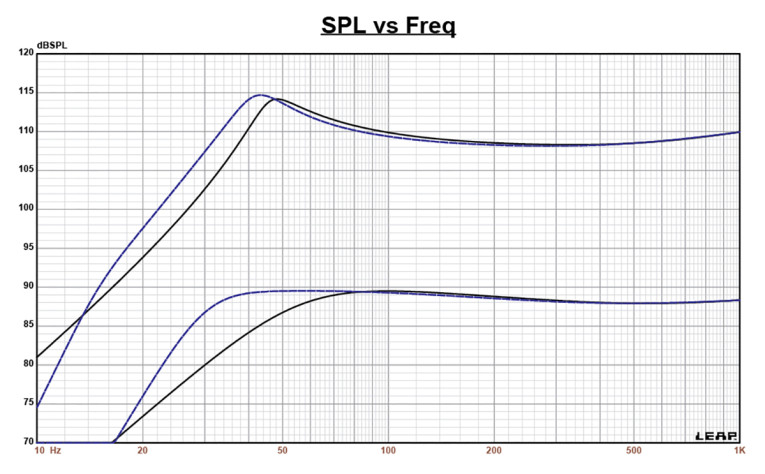
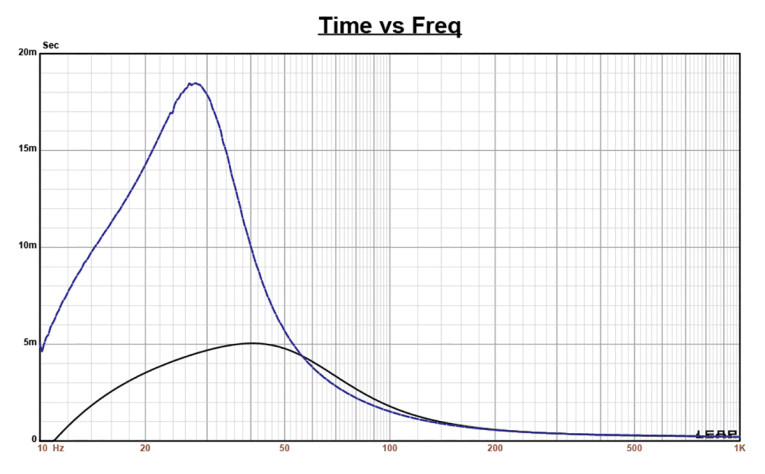
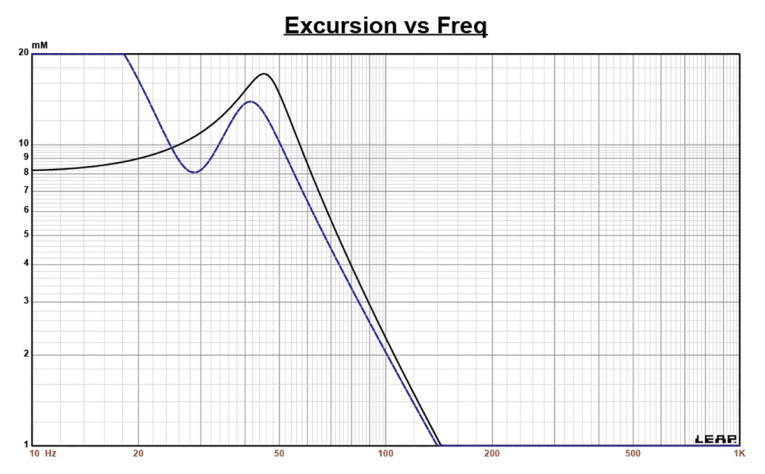
Klippel analysis for the Purifi 10” woofer was performed this month by Patrick Turnmire of Redrock Acoustics using the Klippel DA2 analyzer. His findings are displayed in Figures 5-8. The Bl(X) curve for PTT10.0X04-NAB-01 (Figure 5) is very symmetrical, with a wide Bl profile typical of a high Xmax woofer and only a minor amount of asymmetry. The Bl symmetry range curve (Figure 6) shows a very minimal 0.85mm rearward offset at a point of certainly (9mm) outward to 1.14mm at close to the physical Xmax of this driver.
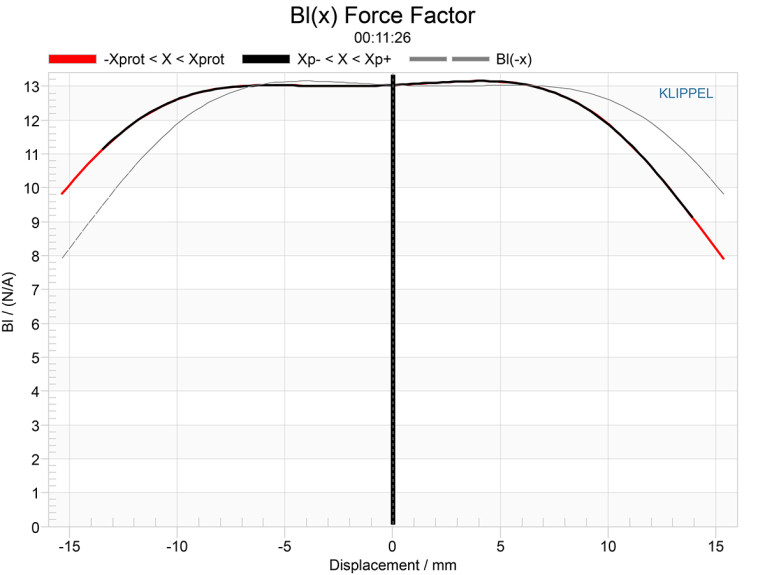
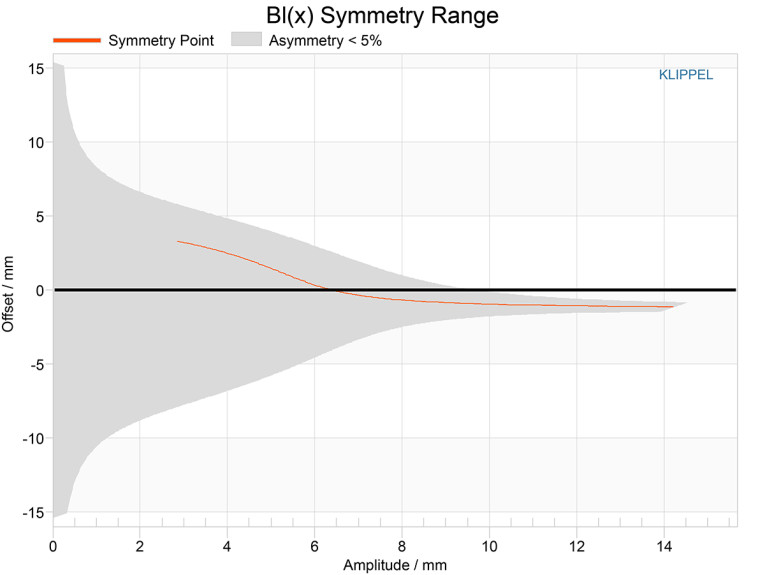
Figure 7 and Figure 8 show the Kms(X) and Kms symmetry curves for the PTT10.0X04-NAB-01 woofer. The Kms stiffness of compliance curve (Figure 7) is broad and with a small degree of asymmetrical behavior. The Kms symmetry range curve (Figure 8) depicts a very minimal 0.74mm forward offset at a point of certainly (6mm) outward to 0.92mm at close to the physical Xmax of this driver.
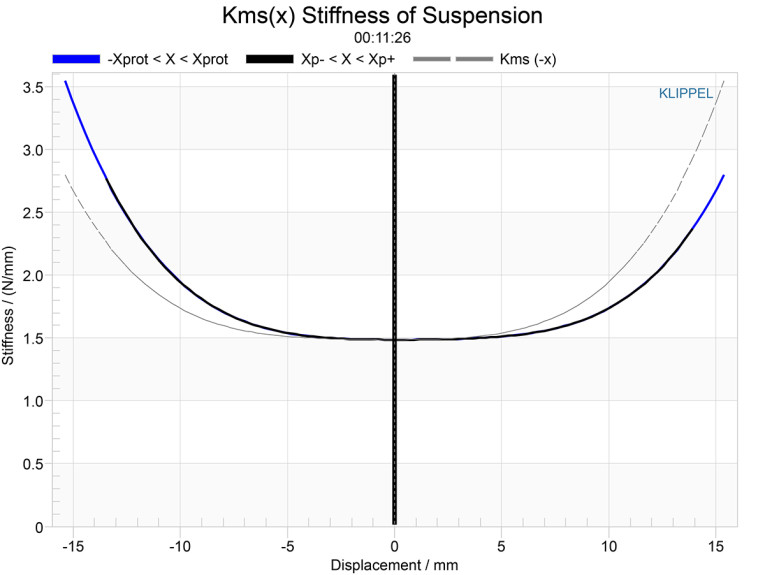
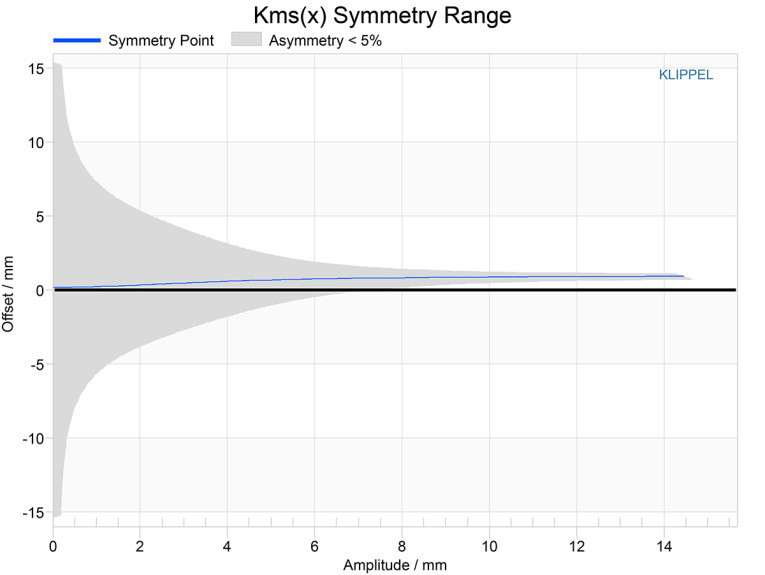
Displacement limiting numbers calculated by the Klippel analyzer using the full-range woofer criteria for Bl was XBl @ 82% (Bl dropping to 82% of its maximum value) 11.9mm for the prescribed 10% distortion level. For the compliance, XC @ 75% Cms minimum was 10.2mm, which means that for the Purifi woofer, the compliance is the more limiting factor for getting to the 10% distortion level. Using the less conservative 20% distortion criteria, the numbers for XBl and XC were both ≥13.4mm.
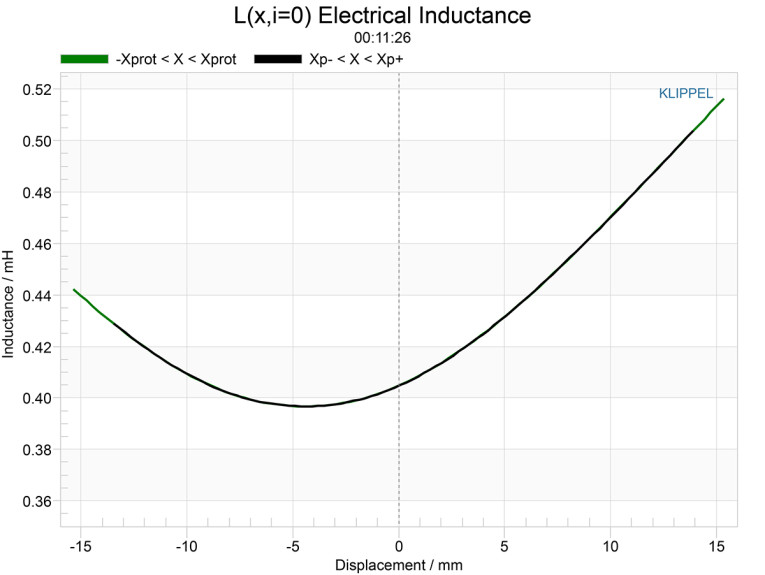
“After testing some 5000+ speakers, I am rarely impressed by a new woofer. The Purifi 10” is the exception. I think this might be the best woofer I have ever tested. High points include:
- Perfect Bl(x) and Kms(x) curves including symmetry curves.
- Perfect balance of performance limits. Excursion limited by suspension and motor perfectly without reaching damaging high voice coil high temperatures.
- Perfect match of X BL and X C.
Best of all there is almost no variation of inductance over excursion. This is important because inductive distortions are the most objectionable for speakers — including woofers because of the high ordered distortion components. These are outside of the normal masking range. In fact, they are even more important for high performance subwoofers, where these distortions can be heard outside of the low pass filter range as ‘singing.’ Amazing speaker, impressive engineering and impeccable industrial design.”
For the remaining tests, I mounted the Purifi PTT10.0X04-NAB-01 10” woofer in a foam-filled enclosure that had an 20”x12” baffle and then measured the device under test (DUT) using the Loudsoft FINE R+D analyzer and the GRAS 46BE microphone (courtesy of Loudsoft and GRAS Sound & Vibration) both on- and off-axis from 200Hz to 20kHz at 2.0V/0.5m, normalized to 2.83V/1m using the cosine windowed FFT method. All of these SPL measurements also included a 1/6 octave smoothing (this is done to mimic the frequency response resolution that I published for years using the LinearX LMS analyzer with 100-point sweeps ….RIP Chris).
Figure 10 gives the Purifi PTT10.0X04-NAB-01’s on-axis response, indicating a rather smooth response that is ±1.7dB from 300Hz to 2.2kHz, followed by break-up mode peaks between 2.8kHz to 5kHz, where the driver begins its low-pass roll-off. Figure 11 displays the on- and off-axis frequency response at 0°, 15°, 30°, and 45°, -3dB at 30° with respect to the on-axis curve occurs at 1.5kHz, so a cross-point in that vicinity or lower should be work well to achieve a good power response and directivity index curve.
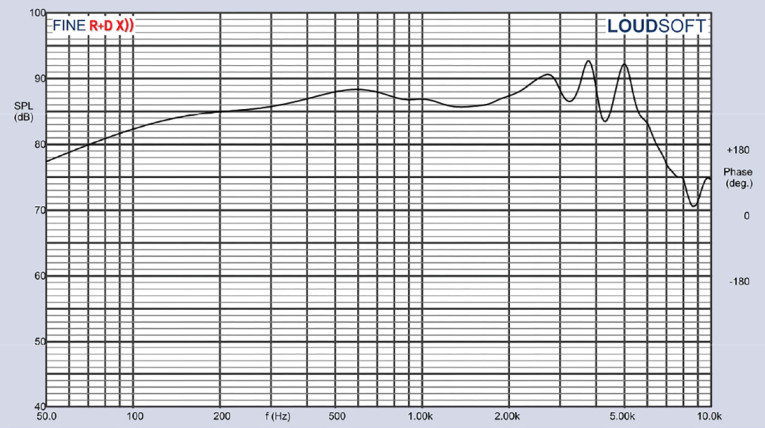
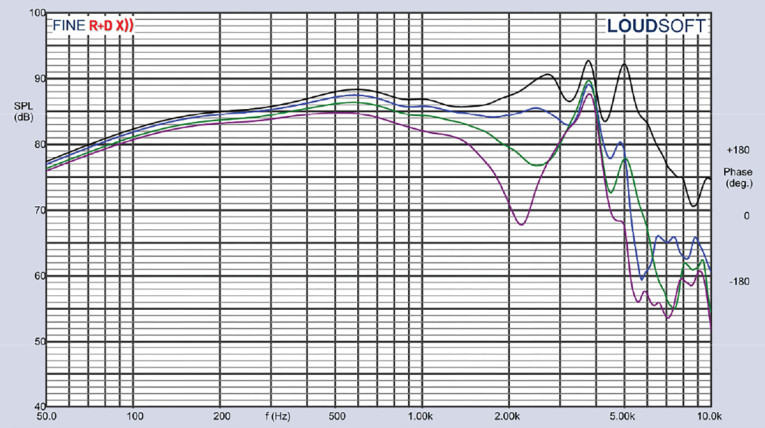
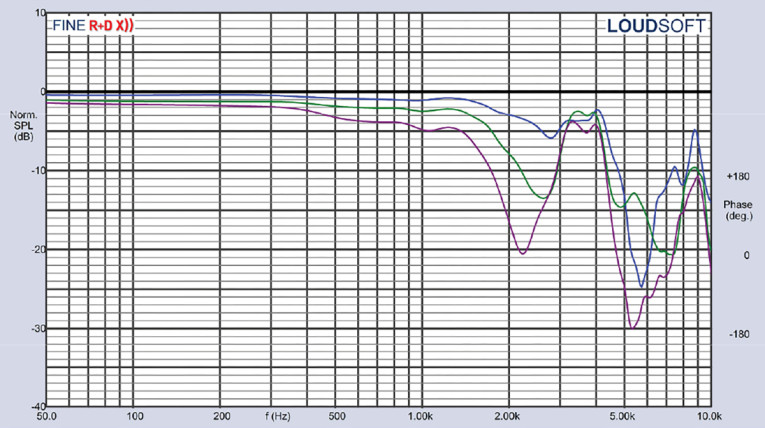
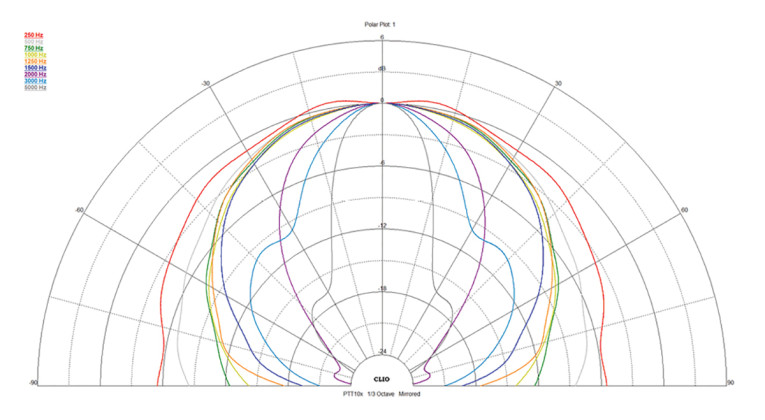
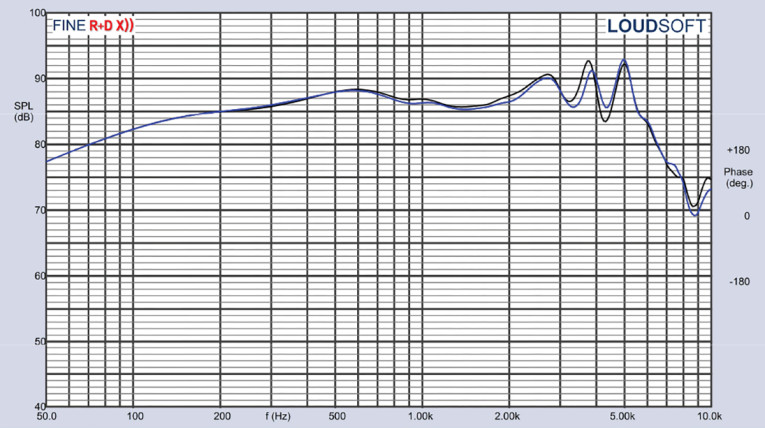
Then, I measured the distortion with the Listen microphone placed 10cm from the driver. This produced the distortion curves shown in Figure 15, which exhibits extremely low third-harmonic distortion (characteristically lower than 0.5% from 55Hz to 3kHz. If you compare this data to the Purifi factory data, there is some variation. Note that Purifi has developed their own proprietary distortion measurement system with the data acquired in an anechoic chamber, compared to my measurements done with a background noise level of around 55dB. Either way, the distortion on all the Purifi drivers, my measurements or theirs, is very low and definitely an important feature of their design technology.
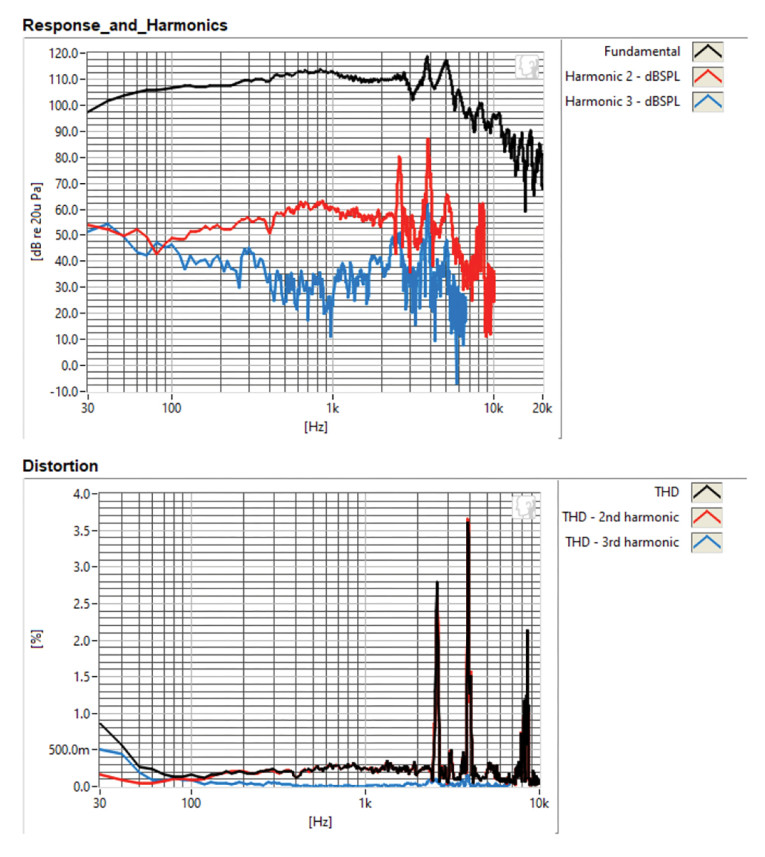
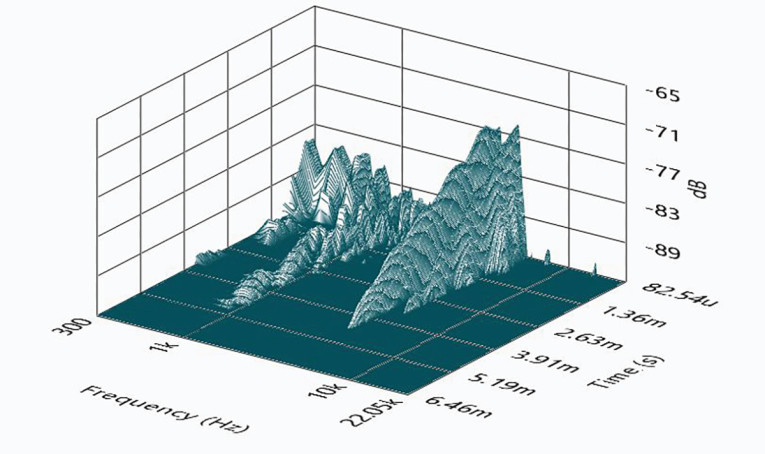
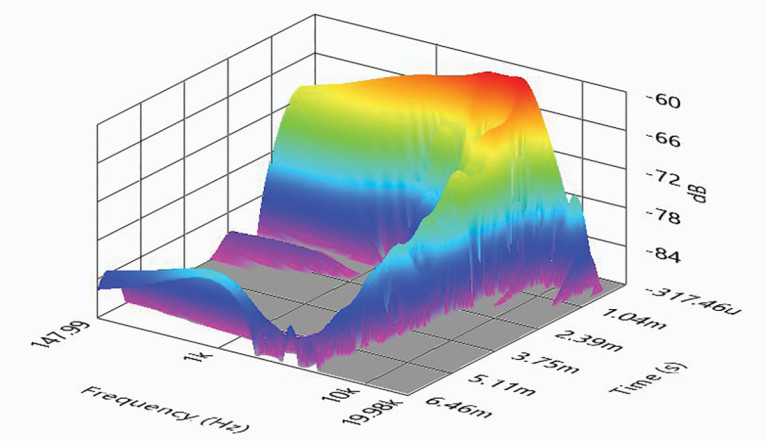
For more information, visit www.purifi-audio.com. VC
This article was originally published in Voice Coil, October 2024




